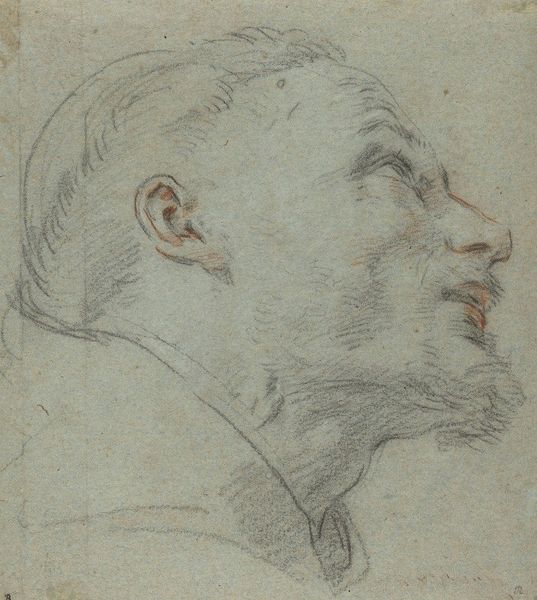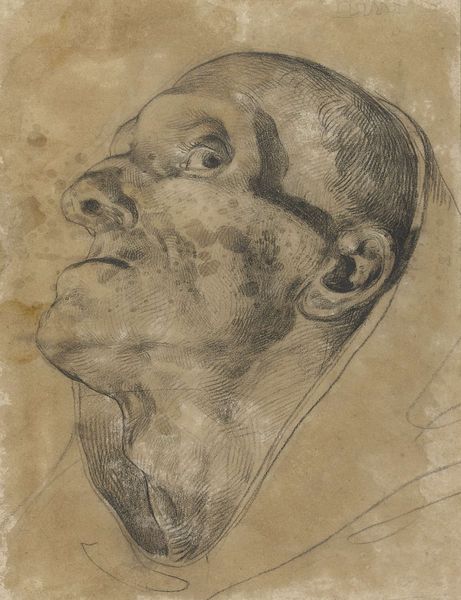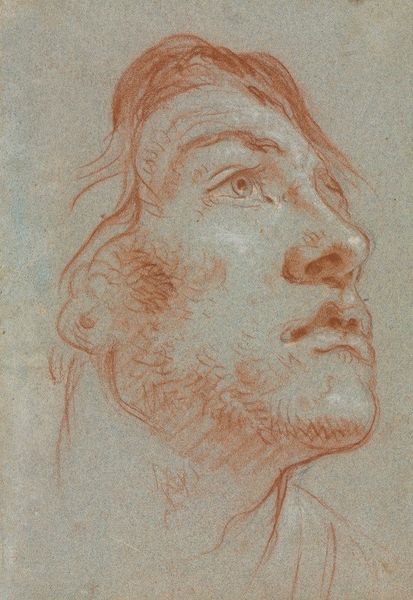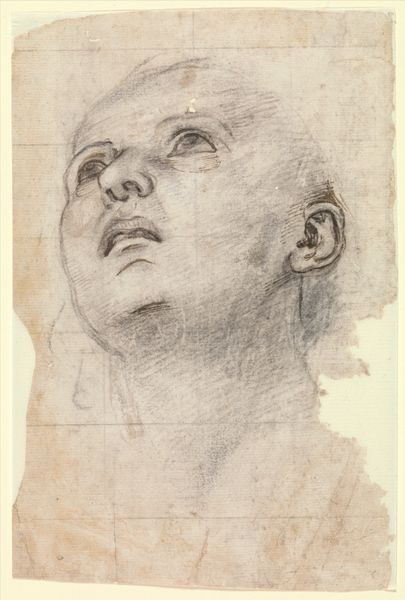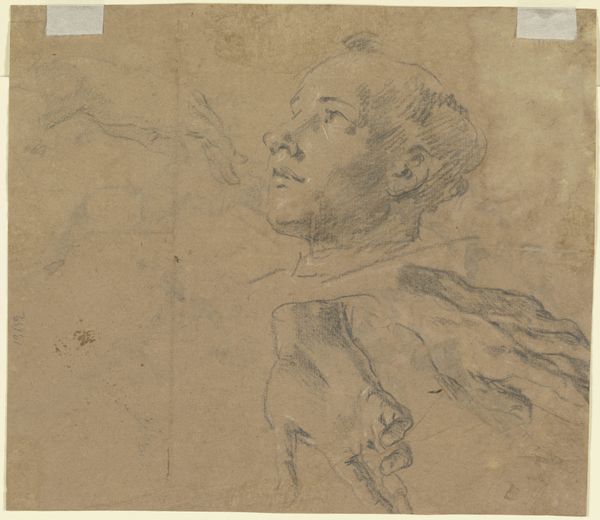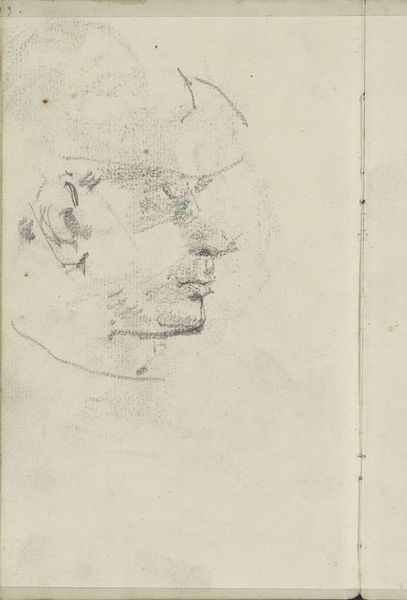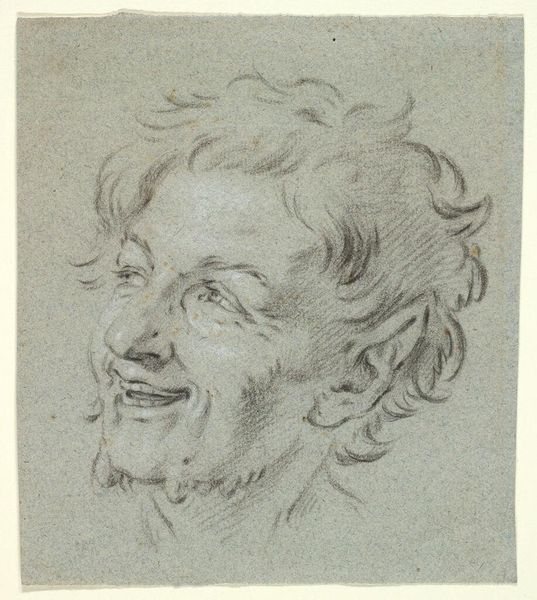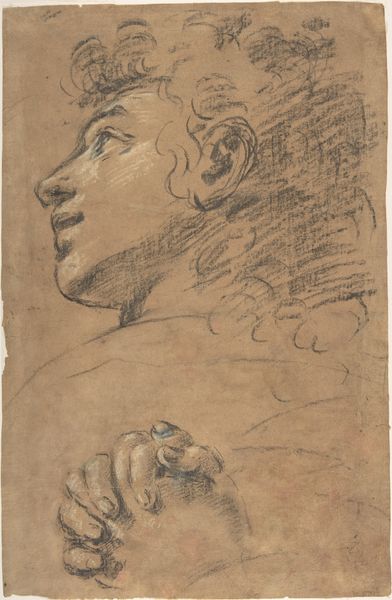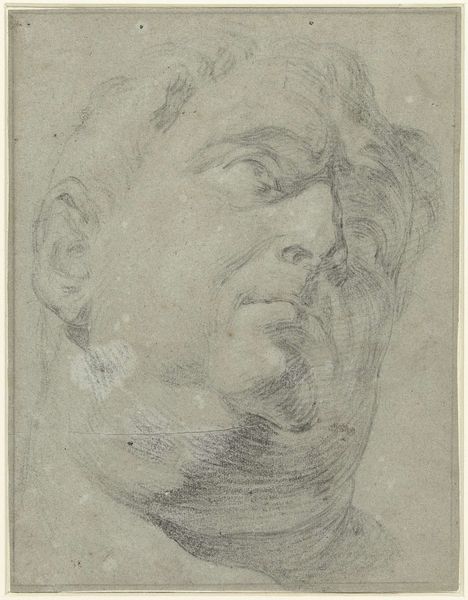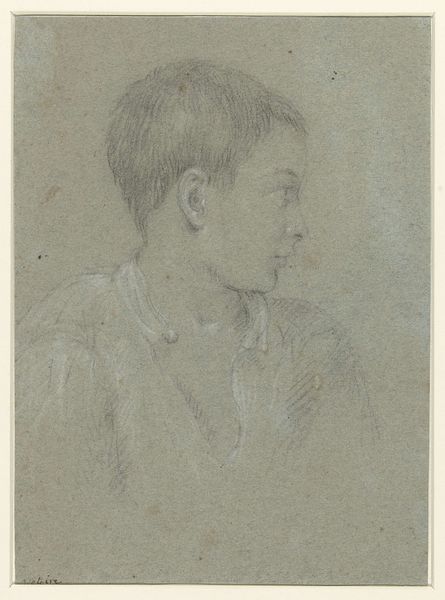
drawing, dry-media, charcoal
#
portrait
#
drawing
#
baroque
#
charcoal drawing
#
figuration
#
dry-media
#
pencil drawing
#
line
#
portrait drawing
#
charcoal
#
italian-renaissance
Copyright: Public Domain: Artvee
Curator: We're looking at "Head of a Satyr Facing Left" by Jusepe de Ribera, a drawing from about 1625 to 1630 rendered in charcoal. Editor: My initial feeling is… unease. The upward gaze, the open mouth, and those slightly pointed ears--there's a vulnerability mixed with something almost feral. Curator: Ribera was quite fascinated by classical mythology and the figure of the satyr, a creature tied to the earthly and the Dionysian. The rough hatching technique in charcoal emphasizes the material presence, almost as if the satyr is emerging from the very earth. It reminds you this wasn't an aristocratic figure. He really seemed focused on representing, with raw material, labor and its marks. Editor: Absolutely, and notice how the artist has played with shadow and light. It's very dramatic, highlighting certain aspects like the bridge of the nose and those tell-tale ears, while leaving other areas softer. Those open mouth, the eyes staring skyward -- these are loaded signifiers. Is it ecstasy? Pain? Or something in between? It’s quite disturbing to see it, even as drawing. Curator: This could certainly also come from that Counter-Reformation atmosphere, using classic myths, or just depictions, to represent very basic people; he might be aiming for a market who's tired of those artificial classical beauty representation of the satyr and prefers down-to-earth imagery with labor on scene.. Editor: Interesting point. Consider also the archetype of the satyr itself: the wildness, the abandon. Throughout history, the satyr embodies aspects of human nature we often repress. This drawing evokes a visceral sense of humanity through this mythological creature. Curator: Well, looking at it again I am really striken by how economical Ribera's rendering is, isn't it? It conveys so much about character and texture with such humble, unpretentious methods. I keep on seeing just the means, like how many trees he saved for doing this amount of marks on a paper! Editor: I completely agree. It is really fascinating the artist captured so much symbolism with so little, an enduring power that resonates across the ages.
Comments
No comments
Be the first to comment and join the conversation on the ultimate creative platform.

